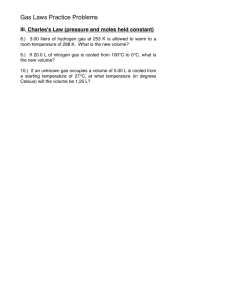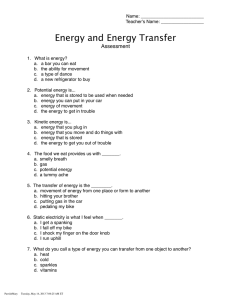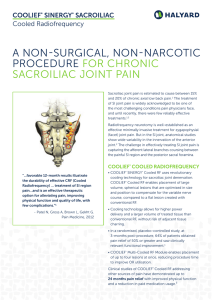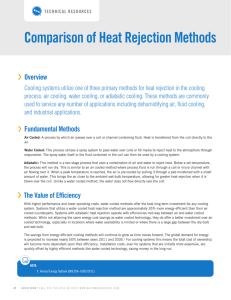5.2.4.B 2011
advertisement
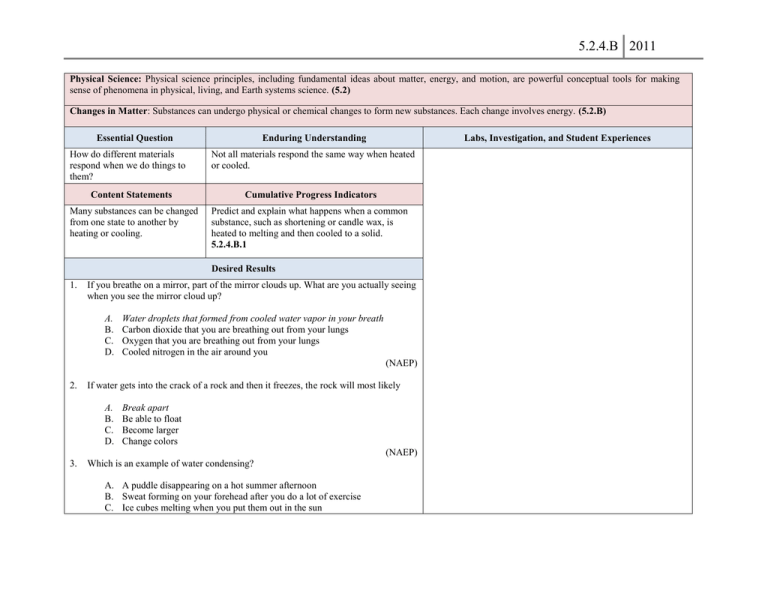
5.2.4.B 2011 Physical Science: Physical science principles, including fundamental ideas about matter, energy, and motion, are powerful conceptual tools for making sense of phenomena in physical, living, and Earth systems science. (5.2) Changes in Matter: Substances can undergo physical or chemical changes to form new substances. Each change involves energy. (5.2.B) Essential Question How do different materials respond when we do things to them? Enduring Understanding Labs, Investigation, and Student Experiences Not all materials respond the same way when heated or cooled. Content Statements Cumulative Progress Indicators Many substances can be changed from one state to another by heating or cooling. Predict and explain what happens when a common substance, such as shortening or candle wax, is heated to melting and then cooled to a solid. 5.2.4.B.1 Desired Results 1. If you breathe on a mirror, part of the mirror clouds up. What are you actually seeing when you see the mirror cloud up? A. B. C. D. Water droplets that formed from cooled water vapor in your breath Carbon dioxide that you are breathing out from your lungs Oxygen that you are breathing out from your lungs Cooled nitrogen in the air around you (NAEP) 2. If water gets into the crack of a rock and then it freezes, the rock will most likely A. B. C. D. Break apart Be able to float Become larger Change colors (NAEP) 3. Which is an example of water condensing? A. A puddle disappearing on a hot summer afternoon B. Sweat forming on your forehead after you do a lot of exercise C. Ice cubes melting when you put them out in the sun 5.2.4.B 2011 D. Dew forming on plants during a cold night (NAEP)
